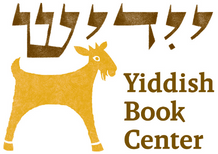Weekly Reader: Celebrating Perets and Esther Shumiatcher-Hirshbeyn
For nearly thirty years, no Yiddish literary couple was as glamorous or well-traveled as Perets and Esther Shumiatcher-Hirshbeyn. Perets (1880–1948), a native of Grodno province in present-day Belarus, distinguished himself as a writer and playwright in Vilna, Odesa, and New York, writing what poet Yankev Glatsheyn called “the four greatest plays in the Yiddish repertoire.” Esther (1896–1985), a native of Gomel (also present-day Belarus), grew up working as a waitress and meat-packer in Calgary, Alberta, and became a celebrated poet whose works were widely published in modernist journals and anthologies. After meeting in 1918 the couple married and toured the world, traveling from South America to the South Pacific and visiting cities like London, Paris, Vienna, and New York. Some notable Hirshbeyn memorabilia, including the couple’s traveling trunk, will be included in our soon-to-open new core exhibition, Yiddish: A Global Culture (October 15—mark your calendar!), and the Center’s White Goat Press will be publishing Hirshbeyn’s memoir, From My Childhood Years. But this week, to mark Perets’s seventy-fifth yortsayt, let’s take a look at what’s already available.
—Ezra Glinter, Senior Staff Writer and Editor
In Print
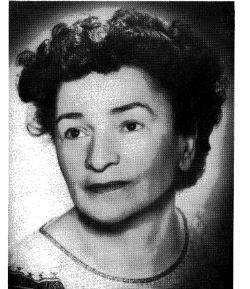
As always, there’s no better place to start than with the work itself. Thankfully, we have plenty of books by both writers in our Steven Spielberg Digital Yiddish Library. Feel free to browse and enjoy!
Read books (in Yiddish) by Perets Hirshbeyn
In Your Ear
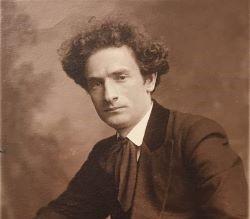
You probably won’t find it on Audible. But if you prefer to listen to your Yiddish books, one of Perets’s works, Monologn (Monologues), has been turned into an audio book and is part of our Sami Rohr Library of Recorded Yiddish Books.
Summer Awakening
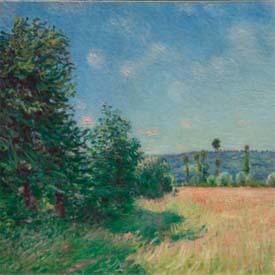
In 1940 the Hirshbeyns relocated to Los Angeles, where Esther remained after Perets’s death and where she was very active in the local Yiddish cultural scene. (There is even a commemorative plaque outside their former home.) Her poetry, which appeared in five collected volumes, often draws upon themes of love, motherhood, and nature, as in the poems “Nine Months” and “Birth,” translated here by Beata Kasiarz. Her poem “Summer Awakening,” translated by Miri Koral, describes the lush urban flora of the California city and was first published in Kheshbn (Reckoning), the literary journal of Los Angeles’s Yiddish Culture Club.
Read “Nine Months” and “Birth”
A Daughter-in-Law Remembers
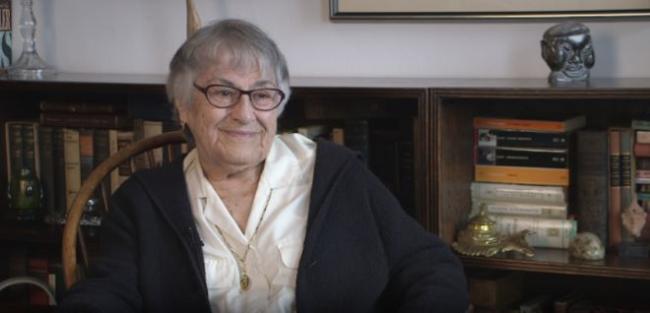
The Hirshbeyns were storied figures among the Yiddish literati, but what were they really like? Fortunately, there are still people around who knew them, including their daughter-in-law, Jessica Hirshbein, who was interviewed by the Center’s Wexler Oral History Project in 2021.
Across America
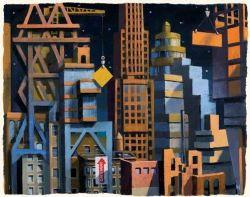
The Hershbeyns are almost as renowned for their travels as they are for their writings, and often the two things overlapped. Across America is Perets’s 1918 chronicle of a train voyage that took him to big cities, small coal-mining towns, and fishing villages throughout the United States. This excerpt describes his impressions of New York.
Childhood Years
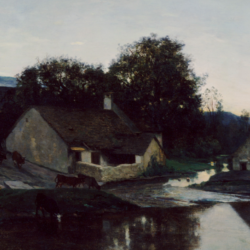
In 1932 Perets wrote a wide-ranging childhood memoir in which he describes, with wide-eyed wonder, life at the mill, local superstitions, his family’s struggle amid harsh winters and poverty, his reluctant first steps as a Torah student, his mother’s anxiety over her many children who died young, and her fiercely protective love. He eventually discovered Yiddish storybooks and then the wider world—his first steps to becoming a beloved Yiddish author. The Center’s White Goat Press will soon be publishing that memoir in English, but for now you can read an excerpt, translated by Leonard Wolf.
